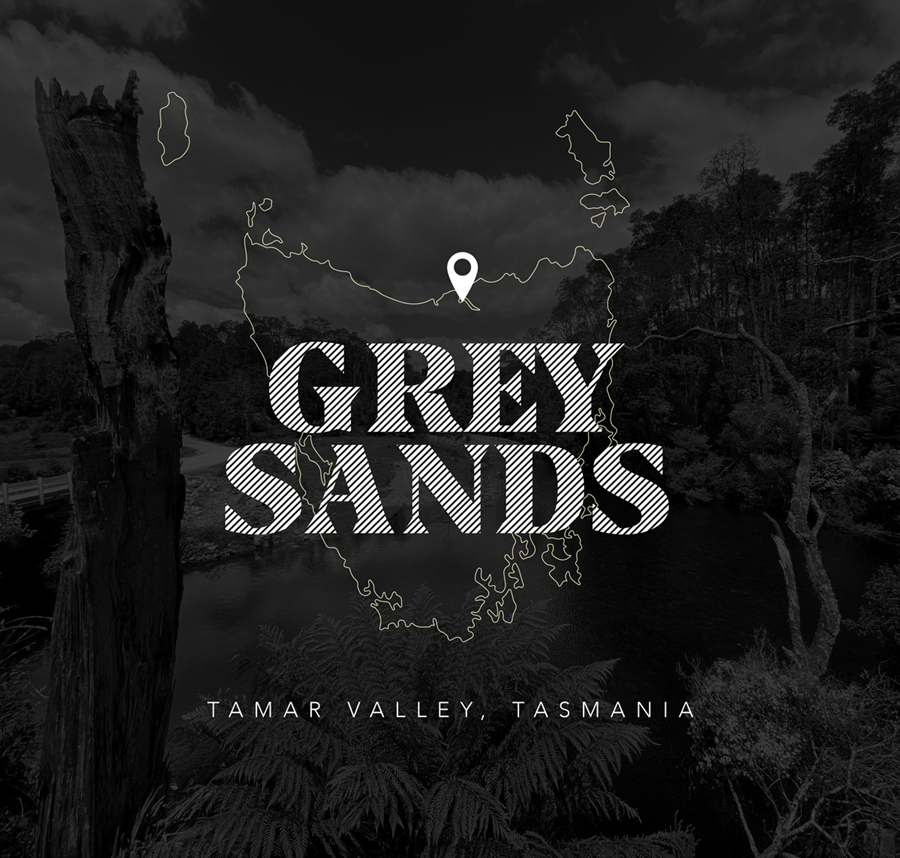 A warm welcome to Tassie producer, Grey Sands who joins our list of UK newcomers. A wonderful collection. Fabulous Blanc de Noir. Their Pinot Gris must be the best new world example we have ever sampled. Meet Bob & Rita and their wines   You purchased your vineyard back in the 80s after being inspired while touring Europe. What drew you to the site and has it lived up to your expectations? From our travel and tasting around the wine regions of Europe, I came to the conclusion that the best wines seemed to come from the ‘marginal’ areas, those not guaranteed of getting a crop ripe each year. I wanted to live in Australia…so I thought ‘what’s the coolest part of Australia?’…Tasmania! This was pre-internet and I had never visited Tasmania, our local library in Shoreham-by-Sea had one book on Australia and it had one line about Tasmania. “Tasmania is a small island off the southern coast of Australia.” I truly thought I would be the pioneer of the wine industry in Tasmania… We returned to Australia at the end 1984 as I had enrolled to do the B.Sc (viticulture and winemaking) at Roseworthy Agricultural College (Now part of Adelaide University). As soon as I started the course I was ‘put straight’ about Tasmania…it already had a wine industry. We finally moved to Tas in February ’87 and immediately began looking for land…first criteria…it had to be suitable for a vineyard, second criteria was that a house would’ve been great too! Initially both Rita and I worked in the public hospital system in our professions. All weekends were spent crisscrossing the area around Piper’s Brook… which is where most of the early vineyards were planted. The more I saw of the soil (very fertile) and the wines (didn’t have the colour and structure that I was after) I decided this wasn’t the area to produce the wines I wanted to make. I met Gavin Scott, (an ex-hospital pharmacist!) and he invited me to his Glengarry Vineyard to try some of his wines out of barrel, a Pinot Noir and a Cabernet Sauvignon. These wines had the depth of colour and structure that I wanted to make. We searched for land in the West Tamar area and finally, in late October 1987, a block of land (35 acres on the same ridge as the Glengarry vineyard) came onto the market. I had called in to the real estate agents to see if there were any properties about and was told this block had just been listed. They said, if I was going out to have a look would I mind taking the ‘For Sale’ sign out with me and tying it to the fence? I went out and arrived there in the late morning. It was just a vacant block of land with a few cattle grazing and by the time I’d walked to the top of the hill I was perspiring. It faced NE, with a good slope and was sheltered from the typical winds in the area (Westerly). I pondered what to do with the ‘For Sale’ sign? I tucked it inside the fence, well hidden by the tall grass! I brought Rita out to see it the next morning (Saturday), made an offer on Monday (subject to soil testing for suitability for vine growing) and it was accepted on Tuesday. The soil is quite varied over the property, at the top of the hill it is fine silty grey sand to a depth of ~30cm, then hard pan and then clay. At the bottom, the clay is right at the surface. I wanted to grow Pinot Gris (which likes sandy soil) and Merlot (the best ones in France are grown on clay.) Yes… I’ve been very happy with this site. We chose not to irrigate, as we are after maximum concentration, not maximum yield. The average yearly rainfall here is 880mm, winter dominant. Of course there are variations from year to year, but once vines get their roots down into the clay, the paddocks will dry out and go brown, but the vines are happily growing. If you irrigate, you can get a crop in ~2years. Without irrigation, this can stretch out to 5+ years. Rita and I continued working off-site until 2013/12 (respectively)… to ensure we had an income to keep the bank happy! This is one of the reasons we have been able to hold our wines back and release them when we felt they were a ‘pleasure to drink’. Our Merlot in particular is very tight and tannic and is not pleasurable to drink until it is 5-10 years old (depending on the vintage). We learnt this with our first vintage in 1998! Similarly, because all of our white wines are left on lees for 10-11 months, our whites are always at least 12 months old at release. Our Pinot Gris in particular, goes into ‘bottle shock’ after bottling and often takes 12 months to come out of it. There is not a lot of point in ‘showing’ a wine that has no aroma and a closed palate. Our Pinot Blanc takes only a few months to recover from bottling, so it is the ‘youngest’ wine we release. Our site delivers plenty of tannin, colour and structure…which is what I wanted.  Over the years you have planted 17 different varieties, which were your favourites and were there any disappointments along the way? When we first set up our vineyard, I was concentrating on Pinot Gris and Merlot whilst the local industry was pushing ahead with Chardonnay and Pinot Noir. I was convinced, from my travels in Europe, that there were more varieties that could be grown in Tasmania. I have recently planted some more Pinot Blanc, Viognier and Malvasia Bianca. Just this winter I have planted some more Lagrein, Cabernet Franc and a new planting of Carmenere (imagine doing this in France!) I am particularly interested in developing our blends, ‘Byzantine’, ‘Romanesque’ and ‘The Mattock’. Some early disappointments were three clones of Chenin Blanc that developed botrytis mould straight after veraison (colour change). Also three clones of Nebbiolo that failed to produce flowers but grew vigorously instead (I think it needs a hot spell in early summer with temperatures in the mid 30s, which our maritime climate does not deliver.) Until now you have preferred to release your wines with a good amount of bottle age which has its commercial limitations. Why? While living in the UK in the early 80s I was exposed to some amazing, well cellared wines that opened my eyes to the full potential of wine. Old Bordeaux, Chablis, Vouvray and Barolo (this was a time when they were affordable!) showed the most miraculous development in time, sometimes with no hint of what was to come. I was determined to make wines with the same potential to age. Our tagline is ‘Wines made to last’ which is a good challenge to live up to. It all starts in the vineyard. We have a high density vineyard, dry grown, hard pruned to give low yields of intensely flavoured grapes that go on to produce powerful flavoured wines with good structure. At any one time, we have 4000 dozen bottles of wine stored on the property which is a lot for a small producer. 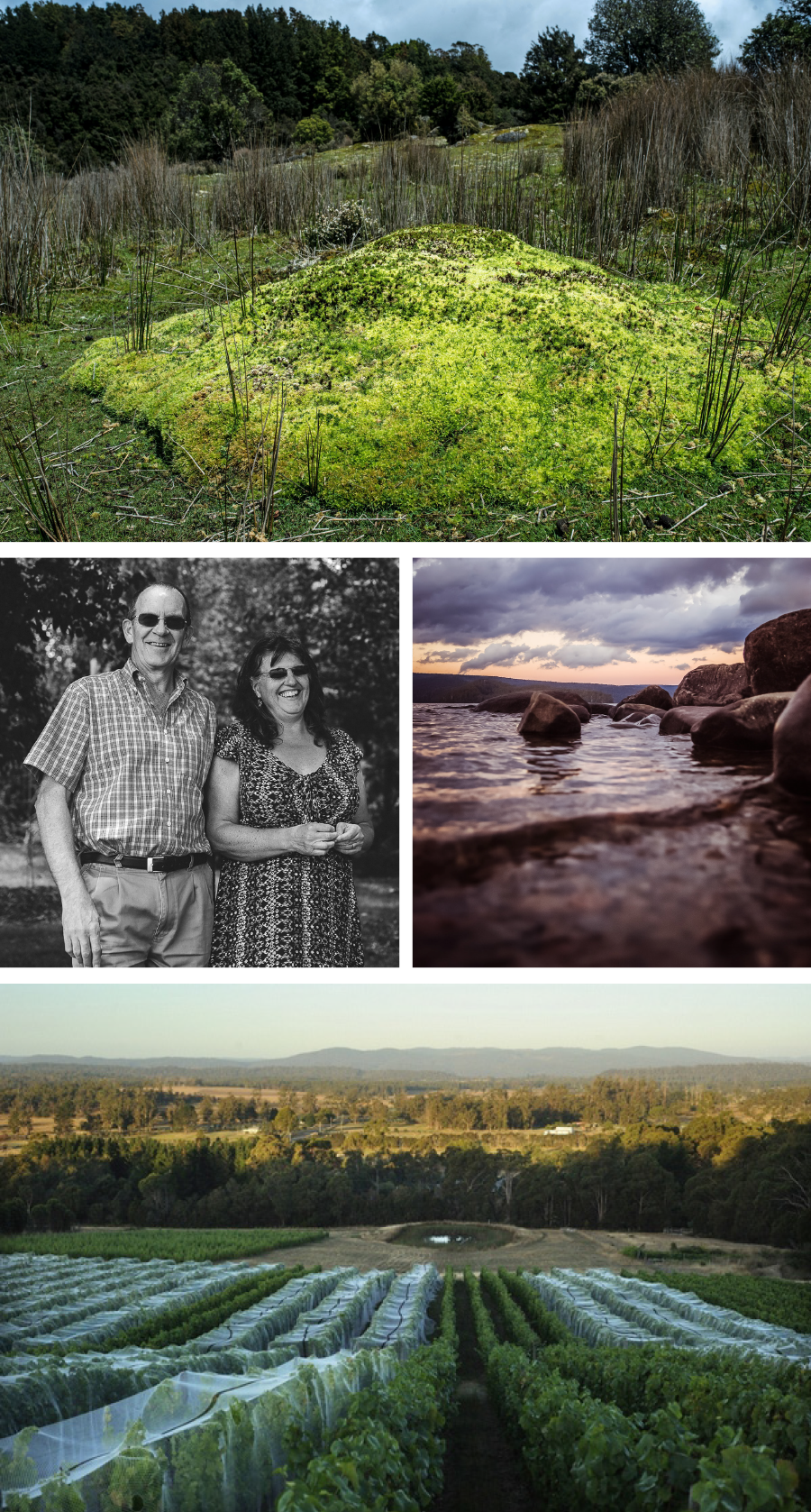 The Tamar Valley looks an absolutely stunning place to live and work. Is it as wonderful as we perceive? Yes!!! The Tamar Valley is a really lovely place to live and work. The traffic has increased in the 33 years we’ve been living here, but it is seldom ‘busy’ compared to other cities in other parts of Australia. It is a really scenic drive, following the Tamar River, to/from Launceston. We are located only 35 mins from Launceston (a small city with lots of restaurants and other amenities), 50 mins to either Greens Beach (sailing, wind surfing, swimming) or Narawantapu/Baker’s Beach National Park (bush walking, lots of native animals, sand dunes for ‘sand surfing’ and surf beach) or 80 mins drive to Ben Lomond National Park (snow skiing in winter, bush walking at other times) • Do you have any suggestions, especially for food and wine related things to do for any of our customers who may be planning a visit to your corner of Tasmania? The Tamar Valley has three distinct ‘regions’ (East Tamar/Piper’s River area, West Tamar and southern Launceston/Relbia) , and there are ‘wine trails’ people can go on to find the varieties of most interest to them. • Hypothetically of course, if you were the prime minister of Australia what would you change? How much time do you have? My mission would be to educate Australians about the need to update our political system without the need to even change our constitution. We need proportional representation like New Zealand, which introduced it in the 80s to become a mature democracy as also seen in the very successful Scandinavian models. At present Australia, the UK and the US are shackled with entrenched two major parties that ‘share’ power. We need lots of parties and independents to bring fresh ideas to parliament and end our constant instability, as factions inside our major parties plot to overthrow the leader (I don’t know how anything gets done while the self-interest of the factions drives the agenda). With proportional representation we could make real progress. • The world is in crisis and climatically we are heading for a disaster. What is the Aussie wine industry implementing to help put the brakes on climate change? (This question really brings out my dark side). Sorry, but nothing the Australian wine industry could do would balance the carbon rich fossil fuels we mine from the earth each year. Australia’s production of coal, oil, and gas is staggering. Any efforts by the agriculture industries is purely window dressing. • Do you believe all producers should be, at the very least organic, with a complete block on non-organic sprays / herbicides / practices etc.? I have the greatest respect for organic growers. It is a noble cause and much hard work. Where we are on the western edge of the Tamar Valley, we receive on average 880mm of rain each year. This is not dissimilar to Galicia in north-west Spain. Heavy rains at the end of winter and into spring puts a lot of disease pressure on the vines, so I will use non–organic sprays to protect the crop if necessary, and I follow the guidelines of the AWRI so as to achieve no detectable residues on analysis, and use organic or biological products wherever possible and available. • How big is your home cellar collection and what gems do you have hidden away in there? I don’t have a large cellar per se but I do have museum stock of our wines back to our first vintage in 1998. I don’t drink much Australian wine but tend to regularly buy wine online as I search out the most obscure and interesting wines I can find. This reflects our travels over the years to wine regions across Europe. I get bored easily and so I am always searching for that ‘wow’ moment when you encounter something completely new and intriguing. There is so much to explore! With modern viticulture and oenology, regions in Portugal, Italy and Croatia have a treasure trove of indigenous varieties to showcase. • We like to think we have a tempting selection of wines from your Aussie neighbours. Aside from your own wines, which wines from our range would you pop into your basket? I will be totally parochial and recommend an exploration of some of the wine sub-regions of Tasmania. The Vinorium has examples of Tamar Valley, Derwent Valley, Coal River Valley, East coast and Cradle coast. I would contend that Bass Strait not only cuts off the island of Tasmania from the ‘mainland’ geographically, but also separates the wines made there stylistically. 400 kms of cool Southern Ocean waters and westerly winds that last left Patagonia (the ‘Roaring Forties’) send Tasmania’s wine sailing off in a different direction to our mainland counterparts. • Your last supper, name the three courses and the wines which you would serve with each course. You are welcome to invite three guests, living or dead. Who would they be and why? Not really sure what mood one would be in at ‘your last supper’, so let’s just call it ‘an imaginary get together’ over a meal with wine. So to start, let’s forget political figures, musicians, celebrities and focus on food, wine and fun. The three guests would be Hugh Johnson, Rick Stein and the late Anthony Bourdain. Why? Hugh Johnson was producing the most mesmerizing prose applied to wine around the time we were living in the UK in the early 80s. He bears full responsibility for my Quixotic efforts to make ‘great wine’. I can listen to Rick Stein’s earthy, honest and earnest exploration of ‘cooking’ and food and keep finding something deeply philosophical amongst the simple pleasures of cooking and eating. And for something a bit more edgy, you can’t go past the observations of Anthony Bourdain, world weary, sassy but respectful, incisive and inquisitive. So many experiences packed into one lifetime. As for food and wine- Grilled scampi ‘Dalmatian style’ with a wild herb salad served with two wines as I love to compare, A young Vermentino di Gallura, Capicheri by Capicheri and an older Fiano, La Cometa by Planeta. Quail in a Morel and Juniper sauce with an old DRC Burgundy pulled from Hugh’s cellar with the man himself to ‘guide’ us through the appreciation of such a wine Finally, Chateaubriand, using Tasmanian grass fed beef served with an old Chateau Conseillante Bordeaux with a similar vintage Yarra Yering Dry Red no. 1 made by the late Dr. Bailey Carrodus who I was fortunate enough to share some views on wine with, back in the 90s.  Could you kindly introduce each of the five wines we will be launching from Grey Sands? What is the story behind the unusually named ‘The Mattock’? Do you have any favourites in the range? Starting with some basic background to our wine making. The white wines are all whole bunch pressed to old French oak barrels (I’m not after oak characters, just a safe vessel for leaving the wines on lees). They undergo an indigenous yeast ferment then, most importantly, they rest on their yeast lees for around 10-11 months… until the barrels are needed for the next vintage. The reds are destemmed, but not crushed, to open fermenters. After the ferment is initiated by indigenous yeasts the juice has a commercial yeast addition then pumped over regularly and left for about a week post dryness. The wines go to a mix of new and old French oak for 10 months. 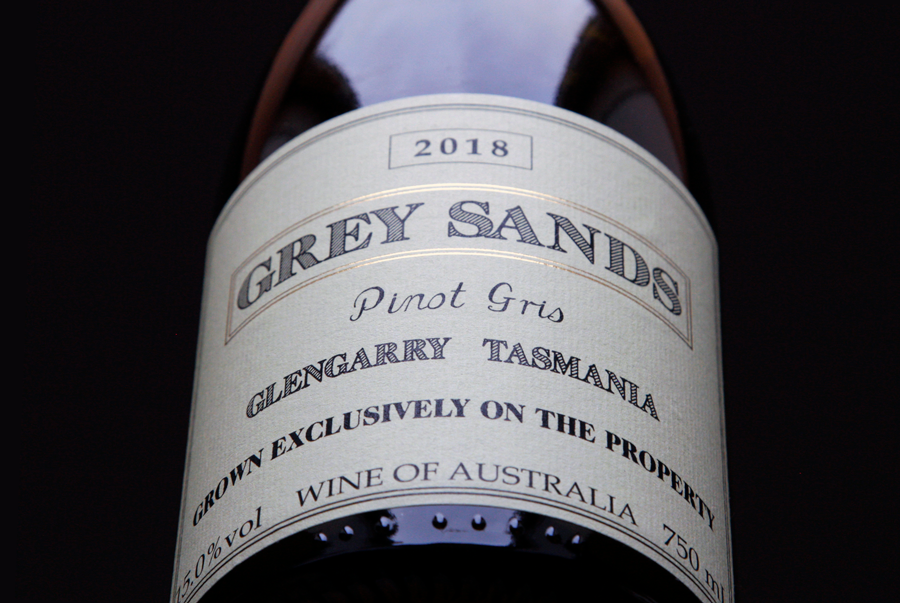  Bob "Pinot Gris was my first choice of white in our early plantings. I had seen some aged Alsatian examples that showed how opulent and exotic this variety can be. Our wine is rich, round and very long on the palate and some cellaring will add spiciness and honey notes with time. A good pairing for a rich pork dish." 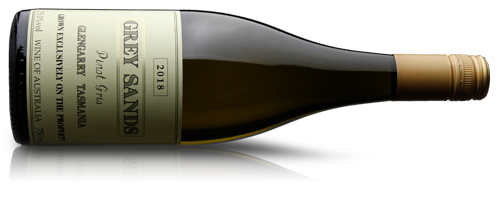 "Without any doubt, the best new world Pinot Gris to have passed my lips" 98+ Stuart McCloskey “Without any doubt, the best new world Pinot Gris to have passed my lips – a dazzling triumph. The nose is wonderful and coaxes you in with spiced pear, banana bread, apricot preserve and crammed with minerals. Texturally this is sublime, the palate feel is sensual – almost elixir with its opulence. There’s impressive density and stunning overall balance. There is bags of personality on display along with countless amounts of white and yellow stone fruits. Spiced pear, citrus and a deep core of minerals infuse in perfect harmony. It is easier to appreciate this as wine today however, its evolution over the next 10-15 years is going to be remarkable. Today, complexity and clarity are evident, but they have just been born. Purchase a case for the cellar and watch this extraordinary wine flourish. This would pair wonderfully with oysters, langoustine, crab and I believe it would be the perfect white wine to serve with a Christmas goose… Do not overchill and best served with a smile and Zalto Bordeaux glassware.” 98++ Points - Magdalena Sienkiewicz "The perfume strikes with complexity and elegant fullness. Beautifully lush and expressive with an abundance of spiced fruit at the fore and a richly mineral background. Do not serve too cold otherwise you will miss out on the aromatic richness. The unctuous ripeness of the fruit gives a lovely sweet entry on the palate. The structure seems endless as the wine expands and broadens to an extraordinary level. Mesmerising complexity and the textural depth is truly impressive. A world class Pinot Gris and certainly the best I have had for a very long time. It’s a serious wine and it requires to be treated as such. Please decant. Sampled using Zalto Bordeaux glassware." £29.50 per bottle  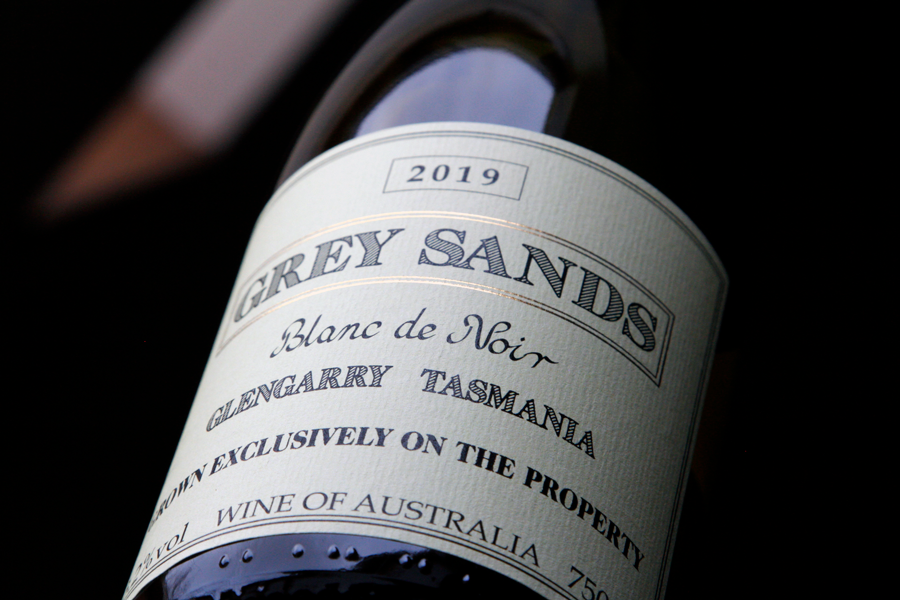  Bob "We have some upright clones of Pinot Noir with larger berries that I wanted to leave out of our Pinot Noir. So in 2017 we made two barrels of a white wine made by whole bunch pressing these grapes. The wine has some opalescence in colour and a delicate aroma of wild strawberry. There is a richness of flavour but a dry finish that would pair nicely with smoked salmon." 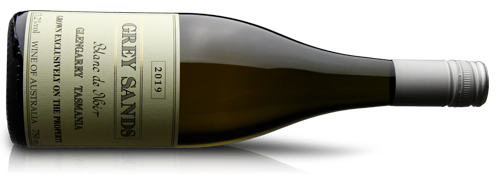 "divine over the decade to come. 97+ Stuart McCloskey “100% Pinot Noir. The bouquet is ripe, highly elegant and defined by orchard fruits underpinned with subtle baking spices and the slightest hint of marzipan. The palate oozes with the same sensual charm as the Pinot Gris – just with a touch more grip on the finish. There’s a generous core of orchard fruit, which reminds me of my neighbour. My home adjoins a large orchard, and this reminds me of my journey home after taking a long walk around the nature reserve – I would help myself to a dew-drenched apple that satisfies my thirst with a little puckering grip. The acidity is racy, it’s super bright with a little chalk / mineral finish. The finish is long and mouth-watering. Of course, very much an infant and will be divine over the decade to come. Simply, a beautiful creation. This may form a natural deposit. Stand upright for approx. 30 mins before pouring and pour the last glass carefully… Do not overchill. Served using Zalto Bordeaux glassware.” £27.50 per bottle 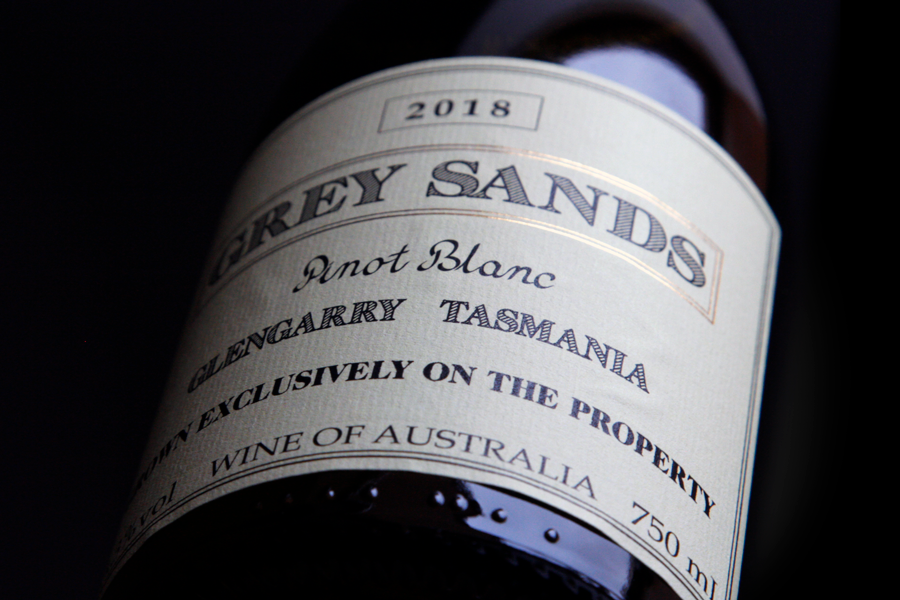  Bob "Although I had tasted some Pinot Blanc wines from Europe, it wasn’t until I had a glass of Pyramid Valley (NZ) Pinot Blanc at a Brisbane restaurant that I fully appreciated the potential of this variety. So different from Pinot Gris, with an almost green floral set of aromas and distinctive acidity that gives some firmness to its structure. A very good wine to pair with seafood." 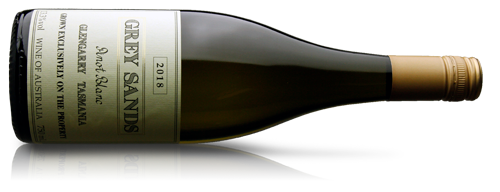 "The style and flavours are crystal clear, mouth-wateringly juicy and super fresh. The palate is pure and skilfully orchestrated." 97 Points - Stuart McCloskey “Unfurling is the perfect word to describe how the bouquet develops with each passing sniff. A little aeration and served at the correct temperature (fridge cold is too cold) is the key to unravelling the complex bouquet. More orchard fruits (perhaps a little oxidised apple). Pear both fresh and in ‘drop’ form exudes with a deep core of crushed minerals – slate and chalk dominate. The style and flavours are crystal clear, mouth-wateringly juicy and super fresh. More orchard fruits develop together with white flowers and a spine of chalk. On the whole, this is an elegant and beautifully aromatic wine which demands time in the cellar. The palate is pure and skilfully orchestrated. A great wine in development. My score reflects the need for more bottle age – another point is sure to come in 3-5 years. Drinking now to 2030+. Served using Zalto Bordeaux glassware.” £27.50 per bottle .png) 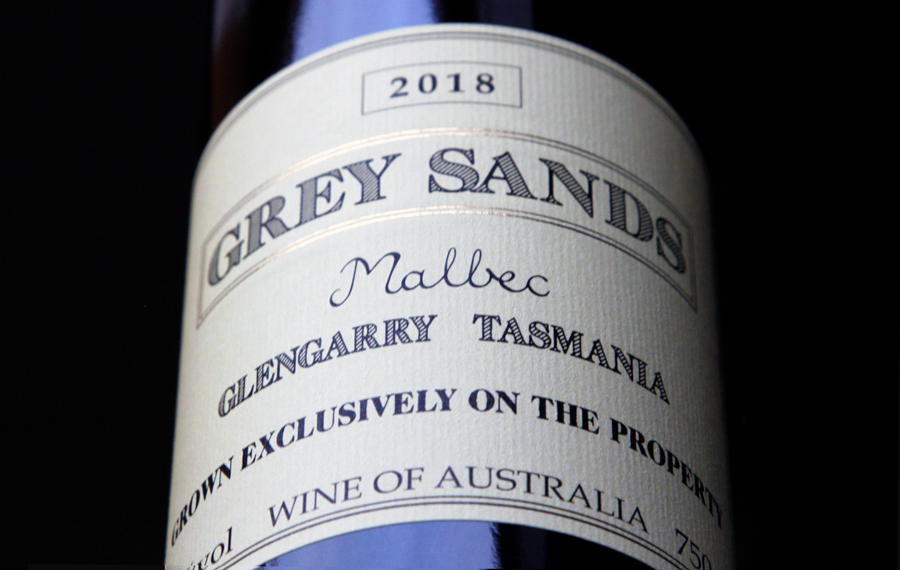  Bob "What a versatile grape, growing from sea level to 2000 metres in the Andes of Argentina, but what about 42 degrees south in Tasmania? This wine has a very deep red colour with a distinct purple edge. The aroma has strong aromas of wild berries (think mulberries, elderberries, loganberries). Despite the ominous colour the tannins are plentiful but fine grained and sit well with the fresh acidity and the palate ends long with aromatic fruit. A great pairing would be meat off the barbeque such as spiced hanger steak for the full experience." "One of the most enjoyable Malbecs I have sampled for a long time with hidden power and concentration. The flavours last forever."  97+ Stuart McCloskey "My first Tassie Malbec and what a fabulous debut. The bouquet is deeply serious with savoury and oceanic aromatics from sea kelp, oyster shell (an overwhelming sense of marine) leading to pen ink and violet. There is lovely ripeness and brisk acidity, translating into a powerful but fresh wine. There is some fruit opulence with deep plum leading to an assortment of black fruits. There’s a little fresh pencil shaving, violet, blueberry and a wealth of minerals… It's compact in stature, concentrated and balanced perfectly. Tannins in abundance, but these are ripe and work wonders with the fruit. To summarise, one of the most enjoyable Malbecs I have sampled for a long time with hidden power and concentration. The flavours last forever and I love the salinity on the finish. A serious Malbec which will last 10-15 years in the cellar. Decant for 2-4 hours and best served using Zalto Bordeaux glassware” 98+ Points – Magdalena Sienkiewicz "I wasn’t sure what to expect from a Tasmanian Malbec, so you could say it’s easy to exceed expectations. However, this wine is truly special and it does remind me a little of The Schubert Theorem from Dan Standish, which is quite an accolade. The perfume is highly seductive and oozes with blackberries, blueberries, violets, sage and those beautiful, evocative notes of warm minerals, oyster shell and seaweed. Just wonderful. The palate follows suit with lovely concentration and savoury texture. What a delight, I’m utterly amazed. Superb today with 5-6 hours of decanting. Stash away a case or two as well, as this will provide much pleasure in the next 10-15+ years. Outstanding New World Malbec which should comfortably take its well deserved place amongst some top world labels. Sampled using Zalto Bordeaux glassware following 6 hours of decanting." £29.95 per bottle .png)   Bob "This is a blend of 60% Merlot, 30% Malbec and 10% Cabernet Franc. It has been a pet project of mine to try to emulate a ‘right bank’ Bordeaux style of wine on our special terroir. Our young Merlot wines are very closed and tightly structured, thus needing some years to soften and open up. On a holiday to New Zealand we saw some pretty examples of Merlot/Malbec blends. This 2018 wine has some nice lift on the nose and the Malbec and Cabernet franc add some sweet fruit to temper the stern Merlot component. A young wine to enjoy with beef or lamb right now, or to cellar for 5 to 10 years. "2012 was the first vintage of The Mattock and Dad passed away that year. I wanted to name the wine in his memory" The origin of the name: A mattock is a digging implement. If you look carefully at the label, the ‘T’ is a stylised representation of a mattock. When we were planting our vineyard, my parents would come down from NSW each winter to help. Mum would be in the house with our young sons and Dad, Rita and I would be outside planting. We all had our set ‘tasks’. Firstly, Rita would put marker pegs in the ground to show where the plants were to go. Next, Dad would start digging the holes for the plants (because we don’t irrigate we have to plant ‘rootlings’, not ‘cuttings’)…each hole required three swings of the mattock. I would start dropping plants into the freshly dug holes and then go back and complete planting them. When Rita finished pegging, she would join me in planting. Dad would just keep on swinging the mattock. Dad always referred to it as ‘The Mattock’. He loved to joke and would come out of the house after a break and say “The Mattock is so lazy, it doesn’t do a thing if I haven’t got my hands on it!” When he and Mum returned home after the planting was finished, Dad would always enquire, “How’s The Mattock? Has it done any work since I’ve been gone?” 2012 was the first vintage of The Mattock and Dad passed away that year. I wanted to name the wine in his memory and as thanks for all the work he did in digging so many holes over the years." 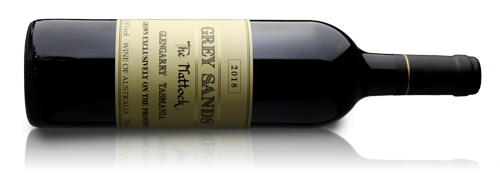 "Grey Sands challenged themselves to produce a Tassie, Bordeaux right-bank, which is both admirable and delicious." 97 Points - Stuart McCloskey “Grey Sands challenged themselves to produce a Tassie, Bordeaux right-bank, which is both admirable and delicious. The nose reveals dried spice box, fresh pencil shavings, blue and blackberry compote, violets and rosehip. The floral element unfolds with time, which is beautiful. The palate is chock-full of sweet black and blue fruits – they are ripe and insatiable juicy. Grip from the tannins arrives, providing some chew and frames the fruit fabulously. I detect anise and a little, sweet Asian spice. This one is really built for the cellar, but can be approached earlier if you decant for 4-6 hours. Served using Zalto Bordeaux glassware.” 97 Points – Magdalena Sienkiewicz "The Mattock opens up with a lush perfume which brims with berries, spice and sweet violets. The structure is excellent for such a young wine. Fruit pokes its head up above a sea of graphite, minerals, spice and dried herbs. Grippy tannins and a zip line of acidity show great potential for ageing. 4-6 hours in a decanter allows The Mattock to unfold. Alternatively, bury it in the cellar and revisit in 3-5 years. This should evolve beautifully in the bottle and provide amazing drinking for 10-15+ years. Sampled using Zalto Bordeaux glassware following 5 hours of decanting." £26.95 per bottle   View our entire Tasmanian collection  .png)  "Established in 1963, Wantirna Estate ranks among the elite in Australia and we are so thrilled to exclusively launch their wines across Europe."  .png) DELIVERY WARNING! Our preferred UK courier, DHL Parcel UK have provided an outstanding service throughout this year, during such an extraordinary time. As Christmas fast approaches, people are turning to online ordering more than ever, leading to record numbers of parcels passing through their network. The Vinorium alone saw a rise of 200% in the last ten days of November. All orders received by us before 2pm are despatched the same day without fail, but in the past 72 hours we have seen at least 30% of our orders delayed in the DHL system. This is far from ideal and beyond our control. In light of this, please can we ask you to be mindful and allow 48 hours for all your deliveries. As ever, my team and I remain at your disposal. My very best wishes, Stu Our Christmas cut off times Last orders will leave our HQ on Tuesday 22 December @ 2:00pm HQ collection available: Cut-off for collection 12:00 noon on Wednesday 23 December All orders placed after 2:00pm on 22 Dec (unless collecting) will be dispatched on Monday 4 January 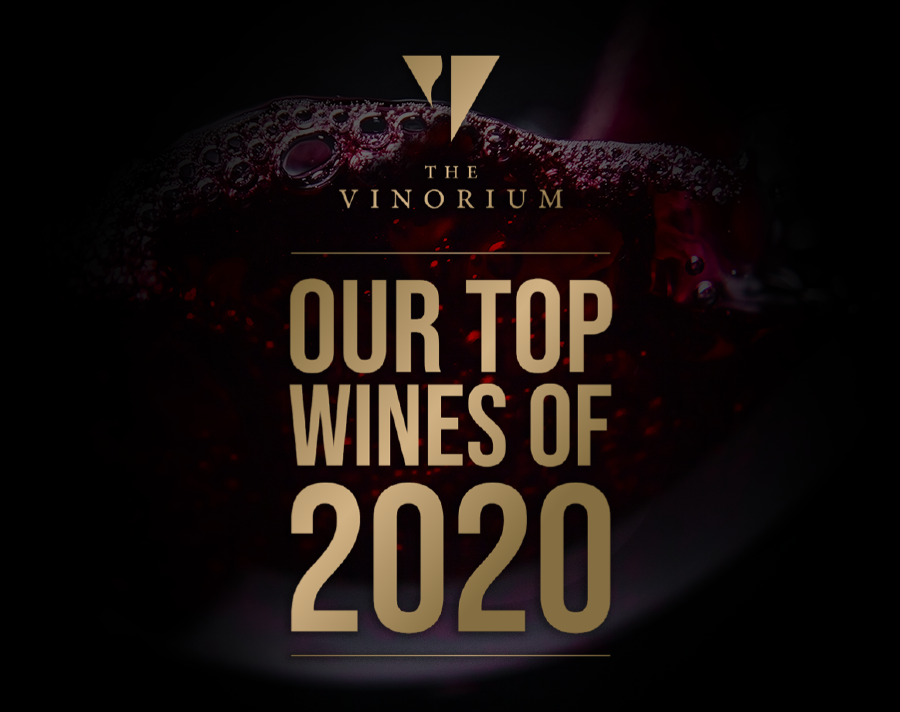 "The Vinorium has celebrated three Decanter awards for ‘Australian Wine Specialists of the Year’ in a row which we are immensely proud of. This is a celebration of the best wines of 2020 which my team, you and I have all enjoyed."   Sensational biodynamic wines from McLaren Vale. Gemtree Wines is owned and operated by husband and wife team; Melissa and Mike Brown. They are dedicated to growing their incredible wines, naturally with minimal intervention in the winemaking process along with an environmentally friendly farming system. Gemtree produce biodynamic and certified organic wines which are powerful, concentrated and beautifully express the true characteristics of each grape variety and region. Team Vinorium have been blown away by their range and we are very excited to share them with you all. .png) |



